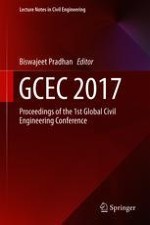2019 | OriginalPaper | Chapter
The Development of Computational Routine for Deformation Modelling and Analysis: A Case for Two-Dimensional Geodetic Technique
Authors : Nur Khalilah Bidi, Zainal Abidin Md Som, Ami Hassan Md Din, Abdullah Hisam Omar
Published in: GCEC 2017
Publisher: Springer Singapore
Activate our intelligent search to find suitable subject content or patents.
Select sections of text to find matching patents with Artificial Intelligence. powered by
Select sections of text to find additional relevant content using AI-assisted search. powered by
